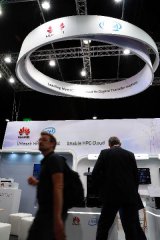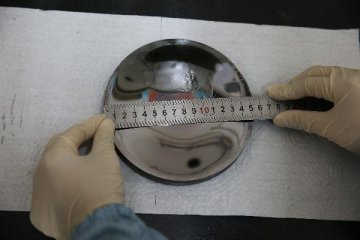Since the U.S. government put Huawei Technologies Co Ltd on a trade blacklist, effectively banning American firms from doing business with it, China's leaders have spoken boldly about achieving self-sufficiency in the critical semiconductor business.
But industry insiders are less optimistic that Chinese chip makers can quickly meet the challenge of supplying all the needs of Huawei and other domestic technology firms.
The prospectuses of Chinese chip companies preparing to list on a new tech-focused stock exchange are blunt, characterizing the domestic industry as "relatively backward", lacking in talent and requiring "a long time to catch up".
"Compared to the constraints of equipment, materials, or talent, I think what China lacks more is understanding of the industry," says Gu Wenjun, chief analyst at Shanghai-based consultancy ICWise. He called some of the government subsidies for the industry "counter-productive", because too many well-funded ventures end up chasing the same talent.
Government appeals to patriotism also go only so far.
A former top engineer the Chinese chip design firm Unisoc, a unit of Tsinghua Unigroup told Reuters the company was often encouraged to use a sister company's memory chips. But that firm, called Guoxin, could not offer technology that was advanced enough.
BETTER TECHNOLOGY
Chip industry officials outside China caution that the country is making good progress in some areas and should not be under-estimated. For a key type of memory chip known as NAND, for example, Chinese firms are closing the gap.
"Money is not an issue for the Chinese government," says one executive at a South Korean memory chip maker who declined to be named, acknowledging China's progress in NAND, or flash chips, which provide long-term data storage. "We cannot stop the Chinese companies, it is a free competition, but we believe we have better technology and a better product."
One of China's biggest challenges, however, is in chip manufacturing, an exacting process that requires both highly specialized tools and many years of experience to master.
A May report from China's Everbright Securities identified one aspect of the problem.
"The manufacturing process relies on equipment, and U.S. firms such as AMAT, LAM, KLA and Teradyne have very high market share in many niche markets," Everbright wrote. "There is no production line in China that uses only equipment made in China, so it is very difficult to make any chipsets without U.S. equipment."
Even when Chinese chip makers do have gear from the top chip equipment firms in the United States, Japan and Europe, they cannot always take full advantage.
One former engineer at Semiconductor Manufacturing International Corp. (SMIC), China's leading chip production firm, said the equipment vendors often had non-disclosure agreements (NDAs) with Taiwan Semiconductor Manufacturing Corp. (TSMC), the world leader in chip-making.
The manufacturing process for advanced chips requires a lot of fine-tuning, and the NDAs covered the crucial tips and tricks on how to best use the machinery and achieve the necessary levels of "yield", or the number of working chips in each batch.
TALENT GAP
The talent shortage comes up repeatedly, with some analysts noting that it took Japanese, South Korean and Taiwanese firms decades to develop their expertise. China has sought to recruit top overseas talent, especially from Taiwan and South Korea, with lucrative contracts, but has not always succeeded.
China's CXMT, a maker of DRAM memory chips, tried to recruit a former top Samsung Electronics chip engineer last year, but the South Korean firm obtained a court injunction to block the move this January.
For microprocessors, the most complex chips, Huawei has developed cutting edge designs for use in its Kirin chips, which power many of its high-end phones. But still relies on overseas firms for key intellectual property and production.
Eric Yang, who invests in Chinese chip companies at venture capital firm Glory Ventures, says that the complex nature of contemporary "system-on-a-chip" microprocessors gives incumbent players an advantage that's hard to break.
"It requires a lot of know-how to build a big chip," says Yang, noting that they include separate areas for CPUs, GPUs, and several other components. "Qualcomm might have 800 people working on one part of the chip. If you don't have the talent you can't win, and all the talent is in the U.S."
Source: Reuters
Translated by Jennifer





















Latest comments